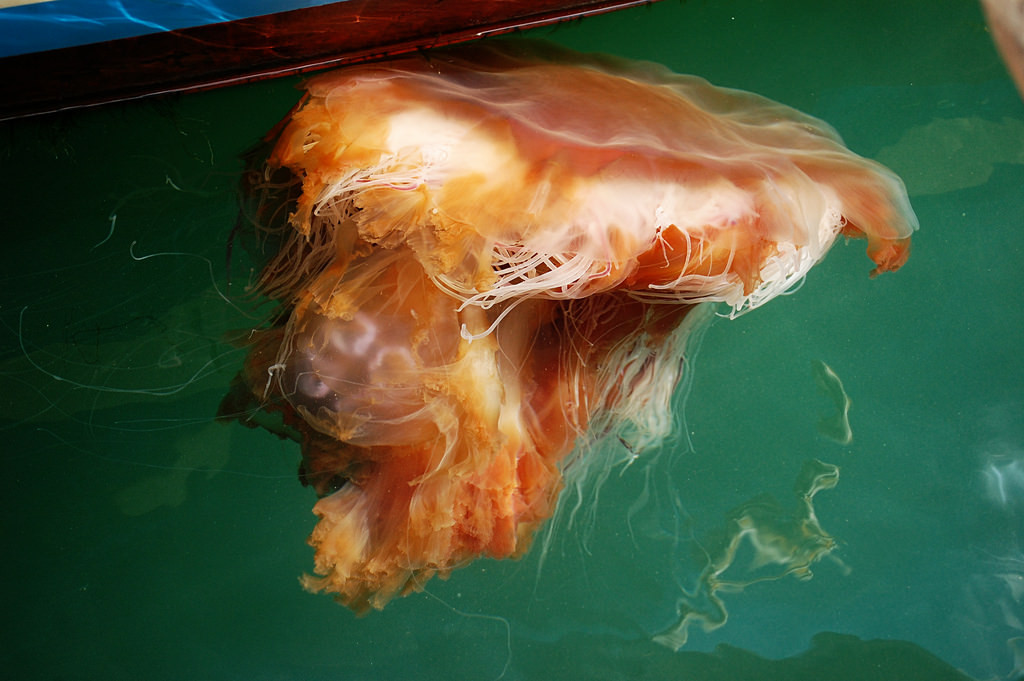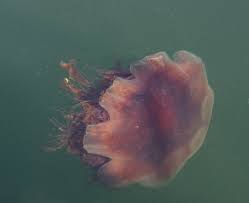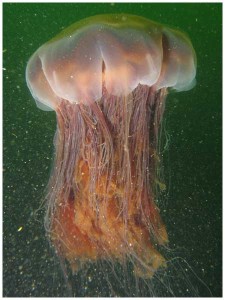Lion's Mane Jellyfish: Winter Visitors to the Chesapeake Bay

Lion's Mane or Winter Jellyfish
As a kayaker and rower I tend to stay on the water as long as safely possible, right up until water and air temperatures become unsafe without a dry suit. Winter paddling and being on the water can be great fun, especially when you look for winter visitors that may be here for the season. One such visitor is the lion's mane jellyfish or winter jelly. Here in the Chesapeake Bay it's a common visitor to our waters in cold months. Many of my friends send me pictures asking exactly what they're seeing, and why there are jellyfish moving in the waters in winter, so I thought a post about these unique invertebrates might be in order.

Lion's Mane or Winter Jellyfish
Lion's Mane jellyfish (Cyanea capillata) are one of the more well known jellyfish because of their size, distribution, and some shockingly bad photos that were Photoshopped and have circulated on the web. First, they are the largest known species of jellyfish, and they can reach about 120 feet in length with their tentacles, and their bell can be over 6 feet in diameter (mostly these big guys are found in the cold waters of the Arctic, they're smaller the closer you get to the equator). Their bell is divided into segments (eight total), though these segments can be hard to see because usually they are colorfully filled with gelatinous goo inside the bell. That gel can range in color from purple to reddish to pink or even yellow. They are named after the bushy array of tentacles that hang from their bell, which tend to be thick and rich, like a lion's mane.

The year-round home range of winter jellies is always in the cold waters of the Arctic, Northern Atlantic, northern Pacific, Baltic Sea, North Sea, English Channel, Irish Sea, North Sea, etc. Notice the trend here? They're all cold waters (usually around 50F or less), which is why you don't see them in the Chesapeake Bay in summer. These jellies drift in over the winter as the water temperature drops since can't handle warm water. They are shallow water drifters (plankton) that live only about a year or two in the wild as adults (medusa). Lion's mane jellyfish are top level carnivores in the oceans and bays where they live, feeding on other jellyfish, plankton, small fish, and invertebrates. To feed, they like to hang out in the top of the water column and won't go much past 10 meters and are rarely found past 20 m. This means that in cold, clear water they're fairly easy to spot.
Since there is so much variability in color and shape I thought it would be good to show you some images to help you spot and identify them.



This image was badly Photoshopped and has lead to the misconception that lion's manes are all huge, gargantuan jellies. Usually you won't see them any bigger than a hubcap.

Lion's mane jellyfish do have tentacles and they can sting, so approach them with caution. Watching them from a distance is a good idea. Their tentacles, even on a beach, or separated from their body can still sting. If you are are stung, try using meat tenderizer (peeing on a person is an old wives tale and will just make a mess).
Despite stinging, remember that they are an important part of ocean ecosystems, as apex predators that take care of other jellyfish, fish, and invertebrates, keeping the ecosystems in balance. Lion's manes are also a major food source for sea turtles, including the endangered leatherback sea turtle. They are a source of food for freshwater turtles, too. It's important that you always recycle plastic shopping bags, and don't let them into waterways, because nearsighted turtles often mistake floating plastic bags for jellyfish and eat them, which can be fatal!


